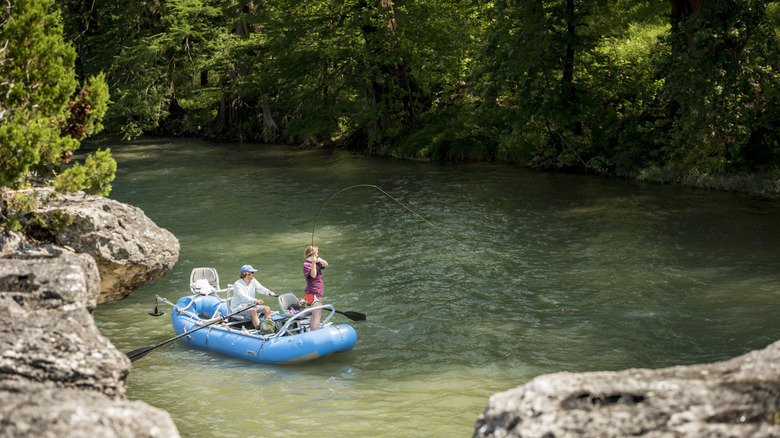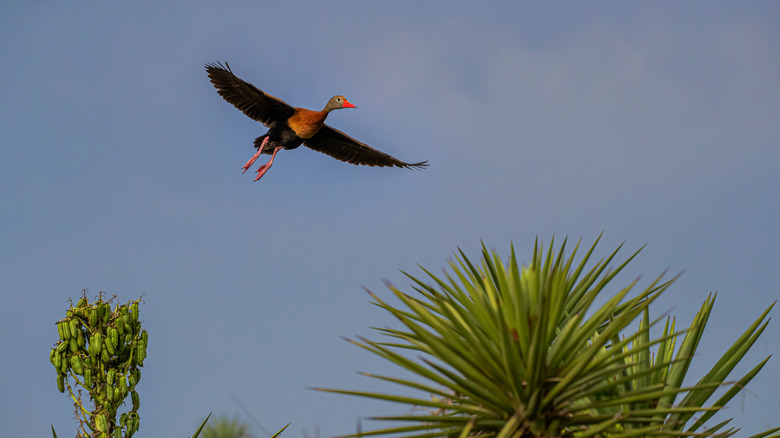Situated Deep In South Texas Is A Quiet Fishing Community With Shallow Flats And Coastal Wildlife
Fed by not one but three distinct bodies of water — the Arroyo Colorado River, the Laguna Madre, and the Gulf of Mexico — it's unsurprising that Arroyo City feeds both physically and spiritually on the fruits of its plentiful waters. Held tight in the embrace of mainland Texas and the beachy, tropical barrier islands of South Padre, Arroyo City (also known as Arroyo) gets its name from its main river, a tributary of the Rio Grande. Boaters, anglers, and swimmers have fished in the river for centuries, since the small township was first created in the 1800s as part of the Mexican territories.
Forget about the music-filled downtown of Austin and the paradise for art lovers in Houston. When you come to Arroyo, you open yourself up to experience tranquil sunrise views of the lagoon. Days can be filled with exploration of the shallow flats that make the area ideal for both fishing aficionados and wildlife watchers, who will enjoy observing the hundreds of species treading the sands between the Gulf and the mainland.
Arroyo's location in the Rio Grande Valley also makes it a perfect addition to a Southern Texas road trip packed with cultural sightseeing, premium shopping, and fantastic cuisine. About 30 miles away, you have Brownsville, the most affordable city in America in 2025, and a vibrant hub with fiestas, zoos, and downtown trails. Or, if you're exploring the borderlands, Rio Grande City is only 100 miles away and offers great shopping, festivals, and authentic Tex-Mex cuisine.
Arroyo's shallow flats are perfect for fishing
Arroyo may not be big, but when it comes to its fishing portfolio, it is second to none. Seasoned fishermen and small boat captains run aplenty in this neck of the woods, so it's not hard to find a guide to show you the best spots. With a bit of savoir-faire and research, you can easily navigate Arroyo's waters on your own. In particular, its lack of crowds makes it an ideal place for a beginner angler looking for some practice or for someone who wants a more relaxed fishing experience.
It's no surprise Arroyo is known as one of the best areas to fish in Texas: its shallow flats (often referred to simply as ”The Sand”) and natural-flowing streams make it perfect to practice different styles of fishing, from wade and fly fishing to bait casting. Sea trout, tarpon, and snook are only some of the magnificent specimens you can catch in its waters. Arroyo also boasts the presence of the Texan "Big 3": speckled trout, redfish, and flounder. The area is a prime location for impressive sheepshead, which is known to hang out on the Gulf south of Corpus Christi.
The many fish, bird, and amphibian species would not thrive were it not for Arroyo's prime location directly on the river estuary. This environment, rich in nutrients and flora, acts as a shelter and nursery for the many species that inhabit it. Its wetlands and banks are teeming with waterfowl, snakes, frogs, and endangered species like the ocelot.
Admire coastal wildlife in Arroyo and its surrounding area
Arroyo City is a stone's throw from South Padre Island, where the sun shines 300 days a year above miles of unspoiled beach. But you don't have to hop across the emerald lagoon to immerse yourself in some of the finest nature the region has to offer. Southern Texas is one of the most interesting (and often overlooked) areas for wildlife and birdwatching. Some species, like the green jay, cannot be found anywhere else in the U.S., and its position near the tropical zone and along migration routes makes it a key spot for environmental and conservation efforts.
A paradise for bird lovers, the Laguna Atascosa National Wildlife Refuge holds the record for the most registered bird sightings in the entire National Parks system. Regardless of which season you pick to visit the refuge, you will soon notice there are always species nesting, migrating, or passing by. Visit in summer to see native predators and small mammals looking for watering holes to find solace from the heat; coyotes, deer, bobcats, grey foxes, and even ocelots are only a handful of the native species you can spot. Fall, on the other hand, is high time for waterfowl such as teals, mergansers, shovelers, and the Redhead duck, a particularly populous species in the Laguna Madre region.
Over 60 miles of hiking trails through splendid scenery make the Laguna Atascosa a paradise on earth, where you can admire some of the finest coastal sights Arroyo has to offer. All of its 20 trails are open year-round, and $2.50 gets you a day pass to the refuge any season of the year (at the time of this writing).


